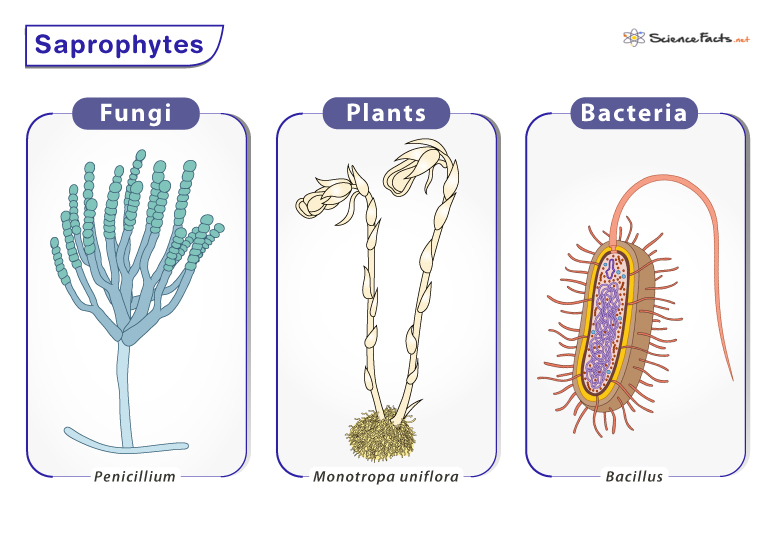Examples of Saprophytes
Characteristics of Saprophytes
Nutrition in Saprophytes
Ecological Significance of Saprophytes
Have a range of adaptations that enable them to thrive in their specific environmentDo not possess chlorophyll for photosynthesis and thus cannot prepare their foodAbsorb environmental nutrients through specialized structures, such as fungal hyphae or bacterial cell wallsSpecialize in breaking down dead organic matter with the help of enzymes and then absorbing the resulting breakdown productsProduce spores and filamentsCan thrive in diverse habitats, ranging from forests and grasslands to aquatic ecosystems, and can adapt to decaying organic matter, such as fallen leaves, dead animals, or decaying plant material.
They secrete various enzymes that break down complex organic molecules into simpler compounds. These enzymes, such as proteases, carbohydrases, and lipases, act externally on the dead organic matter, catalyzing the breakdown of proteins, carbohydrates, and lipids.Once the enzymes have broken down the organic matter, saprophytes absorb the resulting breakdown products. For example, fungi have a network of thread-like structures called hyphae, which penetrate the decaying organic material. The hyphae secrete enzymes that degrade the organic matter externally, and the resulting soluble nutrients are absorbed through the hyphal walls.
Saprophytes also contribute to disease control by breaking down dead organisms, including those infected with pathogens. It prevents the spread of diseases and reduces the accumulation of potential disease-causing agents in the environment.
